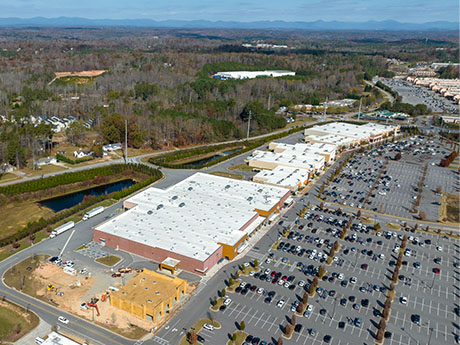Atlanta has historically been a favorite metro for real estate investors to consider when it comes to a market that checks all the boxes. The Peach State Capital and its surrounding suburbs always have been a beneficial and desirable region for residents to live and work. Topping the list as the most popular city for apartment renters in 2022, Atlanta offers more benefits to its residents than just an affordable city to live.
Other benefits of living in and around the city include professional sports teams, a rich arts and entertainment scene and renowned restaurant and retail lineups, among others. Hartsfield-Jackson Atlanta International Airport also offers domestic and international flights to practically anywhere in the world, and it’s situated minutes from downtown.

Home to 17 Fortune 500 company headquarters, including prominent names such as The Home Depot, United Parcel Service (UPS), Coca-Cola and Delta Airlines, Atlanta’s job growth is outpacing the rest of the country. Coming out of the pandemic, Atlanta recorded a job growth rate of nearly 23 percent since April 2020, which outperforms the comparative U.S. metric of 11.7 percent in the same time period. Atlanta has also historically held an unemployment rate below the national average.
With the growth of jobs in the city, Atlanta and its 21-county surrounding region has seen a population boom, with more growth on the way. As of April 2023, the surrounding metro has an estimated population of 6.1 million people, and the Atlanta Regional Commission expects this number to grow to 8.6 million by 2050. The current annual household income growth is also outpacing the U.S. average, as well. This extra income growth is to the benefit of retailers.
What does all this mean for retail real estate investors? It means market and asset stability — even with a poor national macroeconomic outlook and rising interest rates. Seen as a business-friendly city, Atlanta currently boasts a retail vacancy rate of just 4 percent, and the current average rent per square foot around the city is just over $19.
In the headwinds of high interest rates and worries from developers about their anticipated exit cap rate of retail projects, tenants remain active in sourcing vacant spaces and spurring new ground-up development projects. Notable national users such as Whataburger and Raising Canes, to name a few, are currently making a push for expansion into and around Atlanta. The good news is the metro area’s stabilized rental rates and low vacancy help maintain the value of retail assets in and around the city, thus preserving the development cycle of the market.
The narrative in the commercial real estate business is that there is a major pool of investors based on the West Coast, New York City and other major hubs such as Miami-Dade County in South Florida and Dallas. Recently, we are starting to see a shift of where a typical buyer resides. In well over half of my recent and current transactions, we are starting to see local capital be deployed on assets where the buyer lives within a few hours of their investment. The ability for an owner to shop and/or dine at their asset regularly is viewed as an excellent bonus for the stability of their investment.
Notable northern suburbs of Atlanta such as Canton, Alpharetta and Dawsonville are seeing a great deal of new retail developments. As working from home is becoming a longer-term solution for residents, the growth of these suburban markets is in its prime.
A great example is the new, 500,000-square-foot, Kroger-anchored Dawsonville Marketplace. Alongside Kroger in this development are other notable tenants such as Restoration Hardware, TJX Cos. brands, Five Below, Ulta Beauty and Hobby Lobby. Once known as a quiet mountain getaway town an hour outside of the city, Dawsonville is seeing population growth to the tune of nearly 4 percent per year. Dawsonville is just one of the many suburban areas of Atlanta that is experiencing similar growth.
As businesses look to shore up their employment needs, the demand for retail space follows quickly behind. Looking forward, the outlook for retail development and investments around the city is positive. With 3.5 million square feet of retail developments currently under construction, along with retail rents holding firm around $20 per square foot, future forecasts show vacancy rates to hold firm at around 4.5 percent. Atlanta is well-insulated to resist any major or lasting effects of a potential recession, and retail investors are bullish on these benefits of the city.
— By Michael Berk, First Vice President of SRS Real Estate Partners’ National Net Lease Group. This article was originally published in the May 2023 issue of Southeast Real Estate Business.


